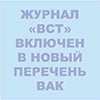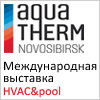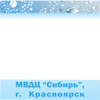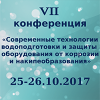bbk 000000
UDC 628.16.065.2
Alekseeva L. P.
Influence of Conditions of Formation and Composition of Filter Wash Water on the Process of Their Treatment
Summary
Results of the research in filter wash water treatment at different water supply stations are presented. Studies conducted and pre-design technological investigations make it possible to establish that compositions and properties of wash water at various water supply stations vary significantly and depend on the quality of influent water which may vary according to the seasons of the year as well as the technology of its treatment (types and dozes of reagent, operation conditions and conditions of the treatment facilities). It is established, that the efficiency of reagent-free clarification of wash water of various types depends on the content of mineral substances in them. Depending on the type of wash water, flocculants as well as coagulants together with flocculants can be used for their advanced reagent treatment.
Key words
wash water of filters , turbidity , suspended substances , chromaticity , coagulant , flocculant
Read more...
|
bbk 000000
UDC 628.161.3.001.891.53
Strelkov A. K., Egorova Yu. A., Bykova P. G.
Selection of most efficient chemicals for water treatment
Summary
The Saratovskoe water reservoir has been the main water source of the Samara public water supply. The municipal water treatment facilities have been built after typical projects and designed for clarification and disinfection of moderately polluted water. Lately sharp suspended solids reduction and organic pollution increase (mainly of natural origin) in the water source have been observed. During flood periods technogenic pollution (surfactants) is present, the concentration of manganese increases, phenol is found. At low water temperature, high color and permanganate value higher doses of chlorine and coagulant are required. Coagulation at low temperatures is inhibited which results in the concentration of residual aluminium and permanganate value exceeding the maximum permissible levels. Higher chlorine dosages cause higher concentrations of chloroorganics in water. Therefore a chemical for using during flood periods that will provide for the required quality of water shall be selected. The results of the laboratory studies of selecting the chemical type and optimum dosage for water purification from the Saratovskoe water reservoir during flood periods are presented. Eighteen coagulant trademarks manufactured by domestic and foreign producers were investigated. The optimum dosages of coagulant and flocculant were defined. From the coagulant samples presented two were selected that could provide for the maximum drinking water clarification at minimum levels of residual aluminium and permanganate value. The final choice can be made on the basis of the technical and economic calculations taking into account the chemical price, delivery cost and required water quality.
Key words
turbidity , sedimentation tank , chromaticity , coagulant , flocculant , filtration , water treatment , residual aluminium , permanganate oxidizability
Read more...
|
bbk 000000
UDC 628.16.065
Belyak А. А., ZHAVORONKOVA V. I., SMIRNOV A. D., Lainer Yu. A., Milkov G. A.
Investigating the coagulating capacity of advanced aluminium-containing coagulants in natural water treatment
Summary
The results of testing three new coagulants developed at the A. A. Baikov Institute of Metallurgy and Material Sciences of the Russian Academy of Sciences: two North-Onega bauxite-based coagulants and one red-mud-based coagulant are presented. The test results showed that the overall performance of water treatment with optimal dosages of the new coagulants was practically similar to the treatment with traditional aluminium sulfate, except for the red-mud-based coagulant that increased the concentration of iron ions in water after treatment.
Key words
turbidity , chromaticity , coagulant , iron , efficiency of treatment , natural water treatment
Read more...
|
bbk 000000
UDC 628.16.065.2.001.2
Strelkov A. K., Egorova Yu. A., Bykova P. G., Erchev V. N., Dudarev V. A., Kichigin V. I.
Research in Possibility of Low Turbid Water Treatment under the PFS-1 of Samara Conditions
Summary
The flow chart of water treatment with an aluminium oxychloride coagulant in combination with flocculant Magnafloc LT20 in winter and during the spring flood has been proposed and tested under production conditions. It is established that the quality of water taking into account permanganate oxidation, residual aluminium, colour and turbidity has improved. It is proved that the efficiency of disinfection in the course of coagulation treatment with aluminium oxychloride is 1,5–2 times higher than with aluminium sulphate. It makes it possible to reduce the dose of chlorine at the primary disinfection and to reduce accordingly the possibility of formation of organochlorine compounds. Due to reduction of an aluminium polyoxychloride dose the sliming at treatment facilities is reduced up to 30% that makes it possible to reduce the discharge of suspended matters and residual aluminium from the station. Manufacturing expenses and water losses go down, conditions of facilities disinfection improve, which guarantees the epidemic safety of water.
Key words
turbidity , chromaticity , residual aluminium , aluminium sulphate , sliming , epidemic safety
Read more...
|
bbk 000000
UDC 628.16
Abuova G. B., Boronina L. V.
Inspection of Water Supply System of the Limansky Group Water Line of the Astrakhan Region
Summary
An inspection of water treatment facilities of the Limansky group water line of the Astrakhan Region has been carried out. Proposals aimed at the enhancement of efficiency of their operation have been developed.
Key words:
turbidity , group water lines , water treatment equipment , main and distribution networks , water intake headers , chromaticity
Read more...
|
bbk 000000
UDC 628.16.065.2 (282.247.33)
Linevich S. N., Breus S. A.
Optimization of Coagulation Water Treatment
Summary
Results of experimental studies on the electrocoagulation treatment of the Don water for organization of the centralized systems of water supply are presented. The electrocoagulation method of natural water treatment in contrast to the reagent method is more ecological and economically efficient. The studies carried out confirm the reasonability of a wider use of electrocoagulation for tap water treatment.
Key words
turbidity , chromaticity , coagulation , surface water , centralized water supply system , electrocoagulation , anode current density , electrokinetic potential
Read more...
|
bbk 000000
UDC 628.1.036:543.3
Serikov L. V., Shiyan L. N., Tropina E. A., Khryapov P. A.
Peculiarities of Measuring of Chromaticity of the West Siberian Region’s Ground Water
Summary
Results of the experimental study aimed at determining the chromaticity of the West Siberian Region’s ground water sampled from a depth of 80–200 m with the use of the chromaticity measuring methods recommended by GOST R 52769-2007 are presented. Difficulties of the determination of chromaticity are associated with the features of the chemical composition of ground water and are due to the generation of stable colloidal particles consisting of Fe(OH)3 and dissolved organic substances of humus origin. It is established that the chromaticity of ground water generally depends on the presence of colloidal compounds of iron and is characterized as seemingchromaticity of water.
Key words:
potable water , ground water , chromaticity , water treatment , odor , taste , colloidal particles , humus
Read more...
|
bbk 000000
UDC 628.161:536.22
Fomina V. F.
Features of Coagulation of Low Turbid, Color Water of the Vychegda Under Conditions of Low Temperature
Summary
Results of the reagent treatment of low turbid and color water of the Vychegda for the purpose of selection of the efficient method of its clarification is presented. The process of coagulation is characterized by the formation of small, poorly settling flakes. Low temperatures of water require increasing the optimal doses of coagulant almost two times and the optimal doses of flocculant more than two times. It is shown, that the water discoloration up to 5–10 degrees and its maximal clarification are achieved in and around of optimal pH values. The empirical dependences of a coagulant’s dose on influent water color with due regard for its temperature are given. The efficiency of low temperature water treatment depends substantively on flocculation process, the duration of which multiplies several times during the periods of water's low temperatures. Under these circumstances the pressure flotation is the most reasonable and efficient method of clarification.
Key words
clarification , chromaticity , flocculation , coagulant , flocculant , coagulation , alkalizing reagent , water temperature , pressure flotation
Read more...
|
bbk 000000
UDC 628.16.065
Alekseeva L. P., Kourova L. V.
The specific features of using organic cationic flocculants in surface water treatment
Summary
The specific features of using high-molecular cationic flocculants for the treatment of water from surface sources characterized by low color, medium turbidity and low organics are considered. On basis of theoretical provisions and experimental results the expediency of using these flocculants as basic chemicals and in combination with mineral flocculants are shown; the conditions of using them at the water treatment plants are determined.
Key words
potable water , turbidity , chromaticity , water treatment , coagulant , flocculant , water source , organic substances
Read more...
|
bbk 000000
UDC 628.113.8:504.064.2
Boronina L. V., Sadchikov P. N.
The appraisal of surface water sources quality
Summary
The results of the statistical appraisal of the parameters indicating the growth of vast majority of pollutants in the total volume of water samples are presented. Herewith the absolute values of the basic growth are positive, which is the evidence of the pollution buildup compared to 2006. The positive values of chain growth indicate unfavorable dynamics of the gradual increase of the given substances in weight; whereas the relevant comparative values (basic and chain increase and growth rates) show their percentage build-up.
Key words
treatment facilities , suspended substances , chromaticity , odor , pollutant , water sample
Read more...
|
bbk 000000
UDC 628.161.3
Alekseev S. E., Alekseeva L. P., Kourova L. V.
Evaluation of the efficiency of different chemicals in removing iron and organics from underground water
Summary
The composition and quality of underground waters in different regions of Russia substantially differ. Most underground waters contain elevated iron concentrations. Iron from underground water that contains oxygen and high concentrations of organic substances (humic and fulvic acids) that cause the water color is most difficult to remove. Besides, in oil producing regions underground waters occur that contain pollutants of anthropogenic origin: oil products, phenols, amines etc. In the process of such water purification integrated methods shall be used to provide for eliminating organic and non-organic pollution. The results of the studies of removing iron complex organic compounds from underground water in the Nefteyugansk region by different chemical methods: oxidation, alkalization and coagulation are considered. The impact of the conditions of using chemicals on the underground water purification efficiency was determined. It was shown that in removing complex iron compounds from water strong oxidizing agents and alkalizing chemicals could be used. To eliminate humic substances and organic compounds of anthropogenic origin coagulating chemicals must be used.
Key words
ozonization , deferrization , ground water , chromaticity , iron , coagulation , permanganate oxidizability , organic substances
|
bbk 000000
UDC 628.162
Getmantsev S. V., Linevich S. N.
Treatment and Disinfection of the Don’s Water at Contact Filters Using the Coagulant SKIF™180of the Latest Generation
SUMMARY
The high efficient compact flowchart of treatment and disinfection of the Don’s water has been developed on the basis of experimental and theoretical studies carried out. In the process, mixers, coagulation chambers and sludge blanket clarifiers or settling tanks are eliminated from the scheme. The use of the method of contact coagulation with the high effective coagulant of SKIF™180 mark makes it possible to reduce reagent consumption by 65–70%, to exclude the necessity of primary disinfection of water with chlorine or reduce chlorine consumption to minimum, to ensure aluminum residual in water within the limits of MPC, to stabilize conditions of water treatment and reduce considerably the cost of water treatment.
Key words
potable water , disinfection , turbidity , chromaticity , coagulation , flocculation , water treatment station , contact filter
Read more...
|
bbk 000000
UDC 628.16.065.2
Strelkov A. K., Egorova Yu. A., Bykova P. G., Kichigin V. I., Nesterenko O. I.
Selection of efficient chemicals for low turbid water purification from surface water sources
Summary
The results of laboratory study of selecting chemicals and optimal dosage for the purification of low turbid water of the Saratov water reservoir are presented. The laboratory tests of aluminium polyoxychlorides (14 kinds) and aluminium sulfate (16 kinds) were carried out. Coagulants manufactured by domestic and foreign manufacturers were studied. The optimal dosages of coagulants and flocculants were determined. Two of the coagulants studied were selected that could ensure the maximum degree of water clarification at the minimum concentration of residual aluminium and permanganate value in drinking water. It was stated that water treatment exclusively with coagulants with subsequent sedimentation and filtration ensured meeting the state drinking water standard. The results of the experimental studies of coagulation of low turbid water of the Saratov water reservoir showed that the maximum water clarification was achieved by sedimentation at the optimal coagulant dosage of 9.6 mg/dm3 for Al2O3 and 0.2 mg/dm3 flocculant dosage. At that the pollution loading on filters is reduced and the filter run increases.
Key words
turbidity , chromaticity , coagulant , flocculant , residual aluminium , permanganate oxidizability , low turbid water
Read more...
|
bbk 000000
UDC 628.16
Gandurina L. V.
The use of VPK-402 coagulant for the removal of suspended solids of different origin and dispersiveness from water
Summary
The coagulation ability of VPK-402 organic coagulant in reducing water turbidity determined by fine mineral particles of different origin and dispersiveness is considered. Water coagulation was carried out under laboratory conditions following the pattern: mixing-flocculation-sedimentation. The concentration of suspended solids in water was determined from turbidity; dispersivenes – from particle hydraulic size U0. The studies were carried out with modeling water with turbidity less than 115 mg/l containing mainly fine-dispersed suspension of bentonite clays, kaolin, quartz, calcium carbonate and titanium dioxide with less than 0.2 mm/s hydraulic size. It was found that the hydraulic size of clay suspensions was determined by their swelling capacity in water; whereas for quartz, calcium carbonate and titanium dioxide suspension – by the particle size distribution of the original minerals. The optimal dosage of VPK-402 for clay mineral coagulation does not depend on their dispersive characteristics and equals to 0.5 mg/l, i. e. 5–10 times higher than the coagulant dosages for modeling waters with finely dispersed particles of quartz, titanium dioxide or calcium carbonate. The efficiency of water clarification lowers with the increase of the percentage of particles with less than 0.05 mm/s hydraulic size irrespective of their origin. The results of the Kuban River water purification validated the obtained regularities. The efficiency of using VPK-402 organic coagulant for reducing water turbidity depending on the origin and dispersiveness (hydraulic size) of suspended solids represented by bentonite clay, kaolin, quartz, calcium carbonate and titanium dioxide particles is considered. The obtained results can be used in practice for optimization of water coagulation to remove suspended solids.
Key words
turbidity , suspended substances , chromaticity , coagulation , hydraulic size , natural water , organic coagulant , polyelectrolyte
|
bbk 000000
UDC 628.162
Gandurina L. V., Gavrilova N. N., Kuzin E. N., Raff P. A.
The use of the dynamic light scattering method for characterizing humic acids in natural water
Summary
The results of studying the impact of sodium, calcium and aluminium salts on the dispersive characteristics of humic acids in natural water with the use of Photocor Compact-Z analyzer are presented. The dispersiveness of humic acids by molecular mass determines to wide extent the efficiency of natural water decoloration with aluminium salts. It is shown that the method of dynamic light scattering can be an efficient and rapid method of studying the conformational changes of macromolecules in alkaline and acid solutions, and chemical interactions between humic acids and metal ions. The studies were carried out with natural and simulated water prepared by extracting humic acids from peat with distilled water and blending the obtained solutions to the required color. The ion composition of simulated water was changed by adding calcium chloride, aluminium sulfate, «Aqua-Aurat™30» polyaluminum oxychloride, sodium hydrogen carbonate and hydrochloric acid.
Key words
chromaticity , natural water , aluminium sulphate , aluminium polyoxychloride , humus acids , alkalinity , light scattering
Read more...
|
bbk 000000
UDC 628.16/.33
Tourevsky S. M., Konstantinov S. V.
The use of DynaSand self-cleaning filters and Johnson Lamella Separators
Summary
The description of Nordic Water Products AB equipment for water purification and domestic and industrial wastewater treatment is presented. DynaSand self-cleaning filters and Johnson Lamella separators are reliable, efficient and simple in operation; they ensure sustainable high quality treatment of raw water. Contact filtration technology has been a great success in different countries, even when used in adverse climatic conditions with various types of water and wastewater.
Key words
potable water , wastewater , chromaticity , coagulation , iron , manganese , aluminium , self-cleaning filter , separator
Read more...
|
bbk 000000
UDC 628.161.004.6
Meshengisser Yu. M., Ulchenko V. M.
Retechnologization and Reconstruction of Water Treatment Systems
Summary
Basic propositions of the concept of water treatment systems retechnologization and its distinctions from retechnologization of wastewater treatment facilities are stated. Recently in the course of reconstruction of water supply facilities growing attention is paid to ecological aspects of their operation and such reconstruction is practically impossible without retechnologization. The process of retechnologization of water treatment and treatment of sediment of natural high- colored and slightly turbid water is described on the example of the State Unitary Enterprise PO Sevmash in the city of Severodvinsk of the Arkhangelsk Region. In the city of Sharya the EcopolymerGroup has executed the retechnologization of the water supply station with the aim to increase the capacity of operating facilities. The reconstruction of water supply treatment facilities in the city of Kovel (Ukraine) has made it possible to reduce iron content in potable water and improve operation characteristics of the facilities.
Key words
potable water , turbidity , reconstruction , deferrization , chromaticity , retechnologization , drains , aluminium salts , thin layer sedimentation , clarifiers with suspended sediment , rapid filters
Read more...
|
bbk 000000
UDC 628.16.065.2
Getmantsev S. V.
System of Selection of Effective Technologies of Natural Water Treatment with the Use of Aluminium-Containing Coagulant
Summary
The accumulated experimental data on the use of aluminium-containing coagulants for natural water treatment found a reflection in numerous publications and monographs. The results of these studies make it possible to judge about the efficiency of application of aluminium sulphate and aluminium polyoxychloride for treatment of surface waters of various compositions as well as evaluate the influence of different water quality indicators on the efficiency of the use of coagulants. Data and results of own studies on the use of AQUA-AURAT™ coagulants which make it possible to reveal certain regularities are systematized and generalized. The algorithm of selection of AQUA-AURAT™ coagulants and technologies of their use depending on the quality indicators of natural water and characteristics of coagulants has been developed. The offered system realized in the form of a program module may serve as a practical instrument for selection of a reagent and determination of technological parameters of natural water treatment at existing or newly-designed treatment facilities.
Key words
turbidity , chromaticity , coagulation , natural water , aluminium-containig coagulant , efficiency of treatment
Read more...
|
bbk 000000
UDC 628.113:624.131.41
Fomina V. F.
Water Humus Composition of the Vychegda River at Water Intake Site of the City of Syktyvkar
Summary
The Vychegda river is the main source of water supply for Syktyvkar. The water is characterized by low turbidity and high color, it contains ferrum and has low alkalinity and mineralization. During the autumn-winter period the water delivered to treatment facilities has a temperature of below 1 ºC. The swampiness of the river basin has an essential influence on water humus forming. The composition of humic substances adding the color to water is studied. It is defined, that fulvic acids compose the substantial part of humic substances. Color indices values for the main fractions of humic substances are defined. The influence of a seasonal composition and properties of humic substances and temperature conditions on water coagulation is proved.
Key words
suspended substances , chromaticity , flotation , humus , coagulant , filtration , river water
Read more...
|
bbk 000000
UDC 628.16.066.1(282.247.41)
Podkovyrov V. P., Arutyunova I. Yu., Yagunkov S. Yu., Shemyakin Yu. V., Strikhar Yu. V.
Technology of high-speed water clarification with the use of microsand
Summary
The Research & Development Centre of MPUE Mosvodokanal investigated a new process of high-speed water clarification. The presented technology is an upgraded option of the traditional technology of water clarification. It allows using the potential of coagulation-settlement processes to the maximum extent. These processes have been the vital stage of the water treatment technology. The results of the studies showed that the developed technology ensures more efficient color and permanganate oxidizability removal compared to the traditional water treatment process used; besides, it decreases drastically the concentration of residual aluminium in drinking water.
Key words
potable water , chromaticity , residual aluminium , high-speed clarification , microsand , permanganate oxidizability
Read more...
|
|














